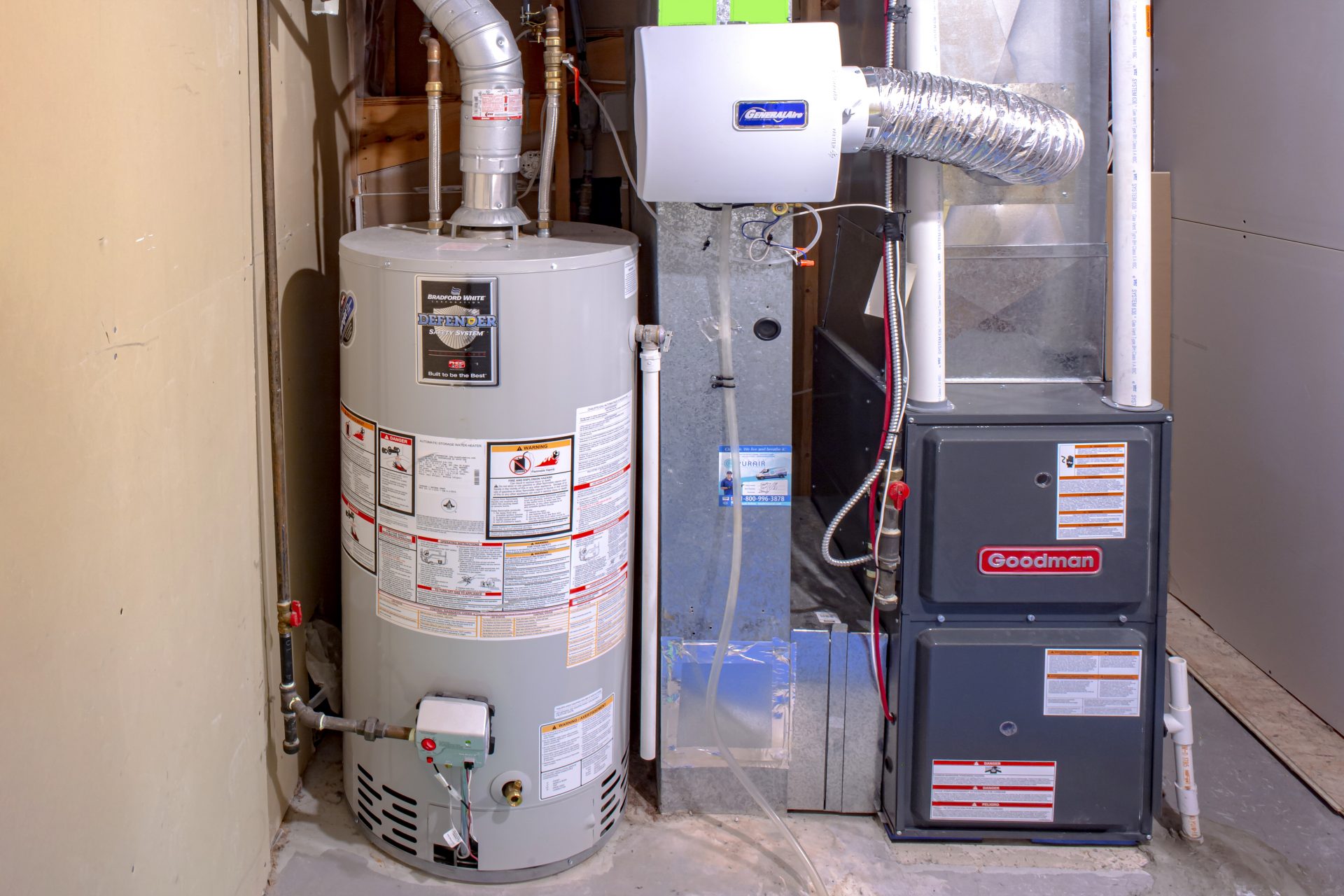
Having easy access to hot water is surely part of people’s day-to-day routine, but it wasn’t until 1866 that people could enjoy a relaxing bath without previously heating the water manually.
Nowadays, water heaters are an essential element in most residential homes and businesses in Canada , with an average of 75 Litres of hot water each at home every day. There are four most commonly used types of water heaters: Conventional Storage Tank Water Heater, Tankless Water Heater, Heat Pump Water Heater and Solar Water Heaters.
A water heater uses energy to raise the temperature of cold water. After years of technological development, we have ended up with various systems of water heating using different sources of energy. One of the most common ways to store the heated water is in a tank, but the water is heated only as needed in the case of a tankless water heater.
Storage Tank Water Heaters
There are the most commonly used water heaters in residential homes of Canada, and they are usually powered by gas or electricity. As its name implies, these systems store heated water in a tank so a quantity of hot water is stored and available to use. When a tap is turned on, hot water flows from the storage tank, and unheated water flows into the tank to replace that hot water. A thermostat turns on the burner or electric element to maintain the water temperature in the tank.
The basic elements and functions of most storage tank water heaters are:
- The Flue Pipe evacuates the deadly gasses created upon combustion
- The Cold Water Shut Off Valve shuts down the cold water when it needs to be drained or replaced.
- The Draft Diverter gathers the gasses to be safely evacuated into the flue and then to the outside.
- The Temperature and Pressure Relief Valve allows excess heat or pressure to be released from a hot water tank so it doesn’t explode.
- The Overflow Pipe is attached to the T&P valve, in the event that the T&P valve releases excess heat/steam the pipe allows the water to drain safely away from the heater.
- The Hot Water Outlet allows the hot water to exit the heater and enter into the potable water supply in a home or business.
- The Anti Corrosion Anode Rod prevents the water from attacking the exposed metals.
- The Dip Tube allows the cold water to enter at the bottom of the tank where the heater rising to the top is always self circulating. This also helps prevent solids from sitting at the bottom of the tank.
- The Elements are only installed in electric water heaters and they are the means by which heat is transferred to the water.
- The Insulation prevents thermal heat loss.
- The Drain Valve is the valve installed at the bottom of a tank type water heater that allows the tank to be drained down.
- The Thermostat or Control Valve is a mechanism to control how hot the water gets in a water heater.
- The Burner ignites natural gas or propane and heats the tank which transfers heat to the water inside.
- The Thermocouple causes the gas valve to shut off the flow of gas to both the pilot flame and the main burner in case the pilot flame is blown out by a draft or fouling of the pilot orifice.
- The Gas Supply Valve shuts off the gas to the water heater.
Tankless Hot Water Heaters
These types of water heaters differ from conventional storage tank water heaters. These are systems that consist of either an electric element or a gas burner that heats flowing water and does not have a storage tank.They literally heat water instantaneously.
Some on-demand gas-fired water heaters have enough delivery capacity to supply hot water for most houses and are usually more energy-efficient than a storage-tank water heater. However, their rated hot water flow rates are based on standard inlet and outlet water temperatures, which is why they are not preferred over storage tank water heaters in Canada.
Heat Pump Hot Water Heaters
Heat pump water heater (HPWH) technology does not generate heat directly.
It moves heat from one place to another. It uses electricity to transfer heat from the air instead of converting electricity directly to heat. Heat is taken from the air in the basement or utility room (or sometimes from outside) and transferred to a tank of water. As heat is removed from inside the home in summer, you will need less air conditioning.
HPWHs are less advantageous in the winter when space heating is required.
Solar Domestic Hot Water Heaters
In Canada, a SDHW system can provide up to 60 percent of the hot water for an average home, depending on local climate and typical hot water use.
Solar domestic hot water systems are usually selected and sized to provide approximately 60 percent of the hot water requirements for an average home, depending on the local climate and hot water use.
Solar water heater systems include collectors, a circulating pump, a storage tank or tanks, and controls. They are commonly configured to preheat water with a conventional water heater for backup. Solar preheat units typically have two tanks. One tank stores solar heat and one is connected to a conventional storage water heater that can be heated by any source (electric, gas or oil). A tankless (on-demand) water heater can also be used instead of the second tank.
Does your hot water tank need some love? Or perhaps it has reached the end of its useful life?
CanWest Mechanical is here for you – taking care of all your hot water tank repairs, installation and maintenance. Get in touch with us today!



No Comments